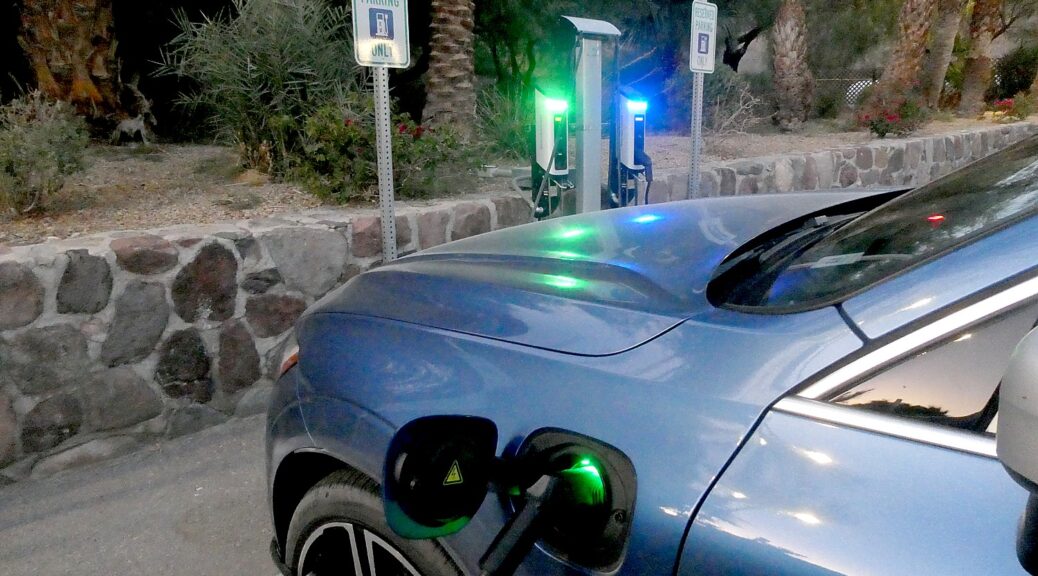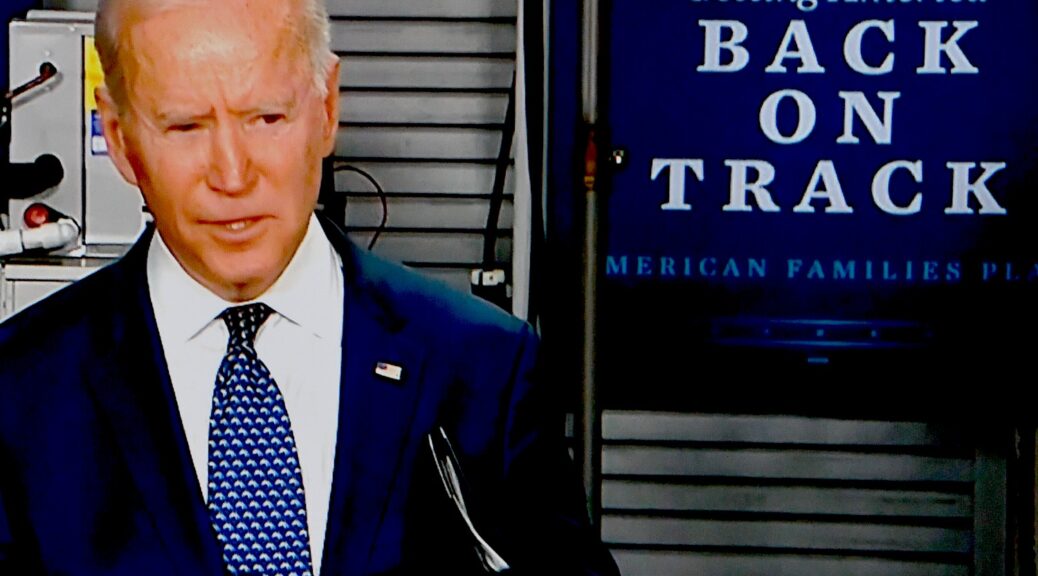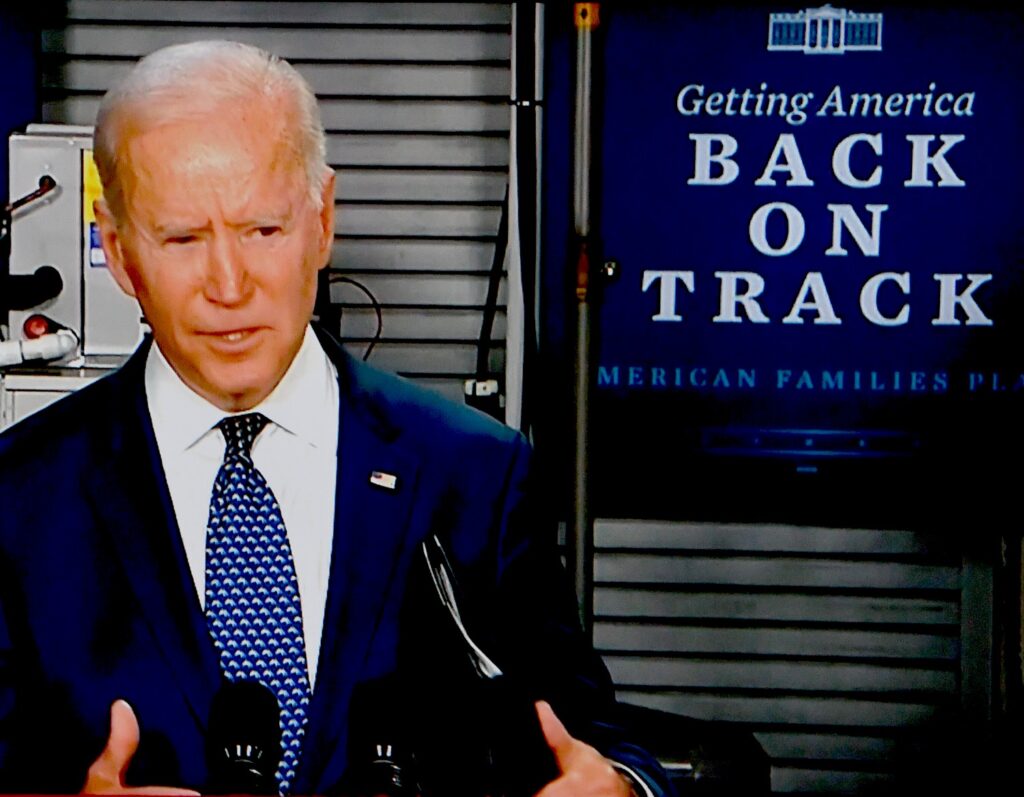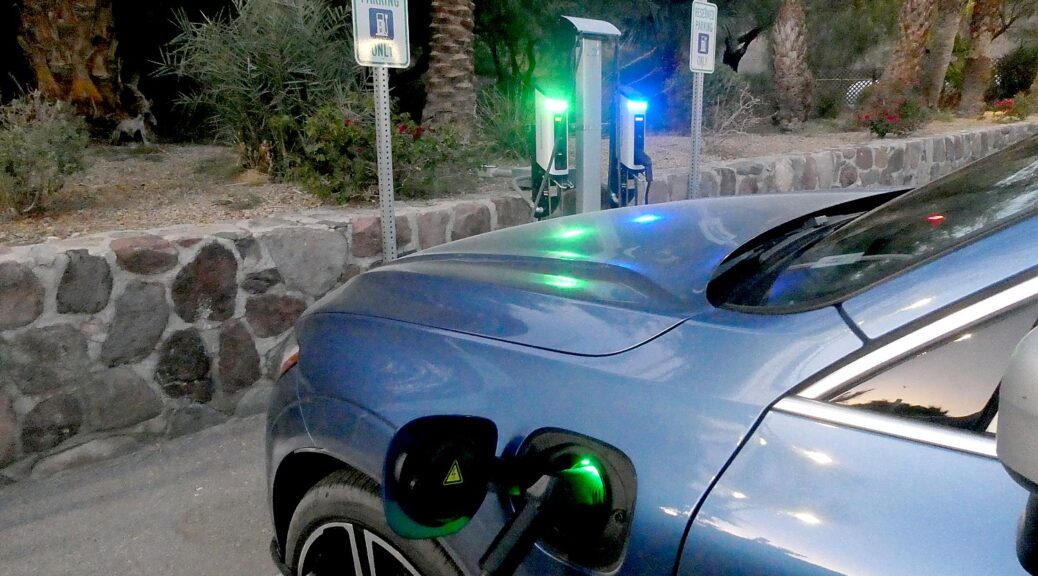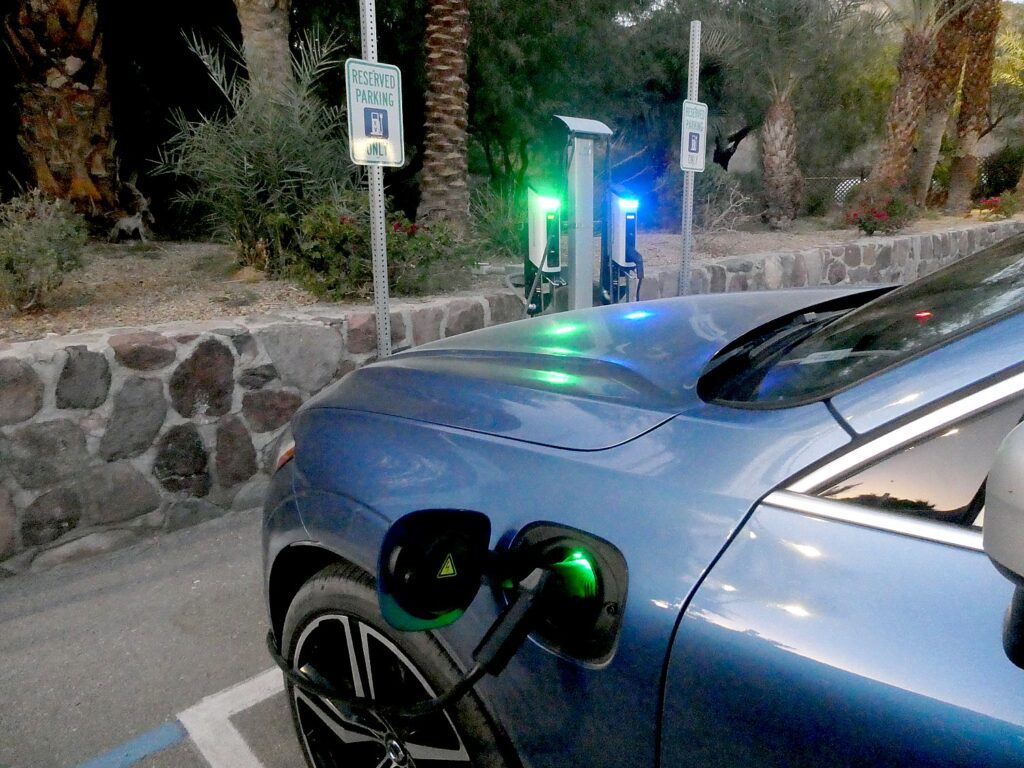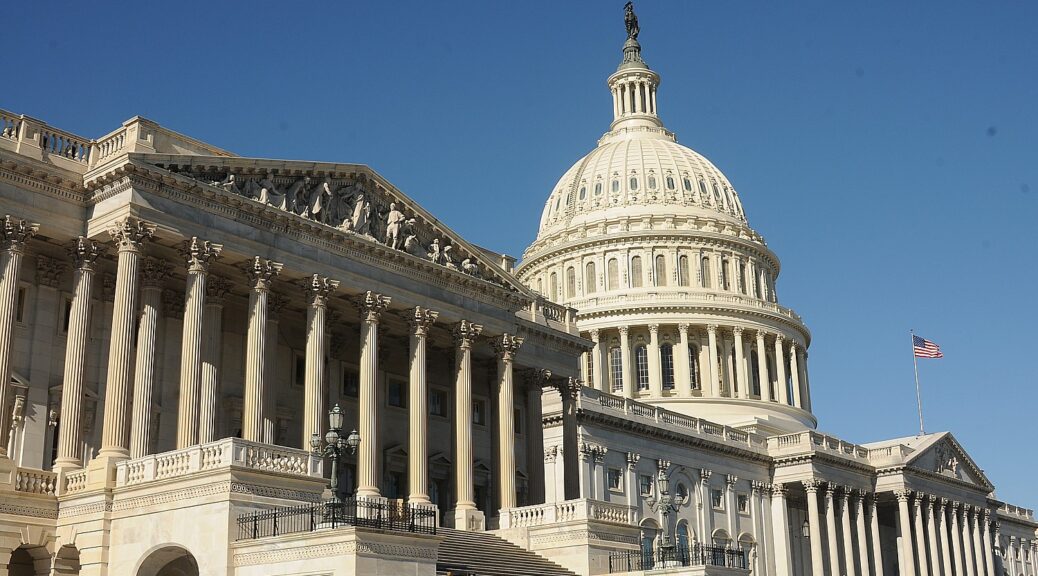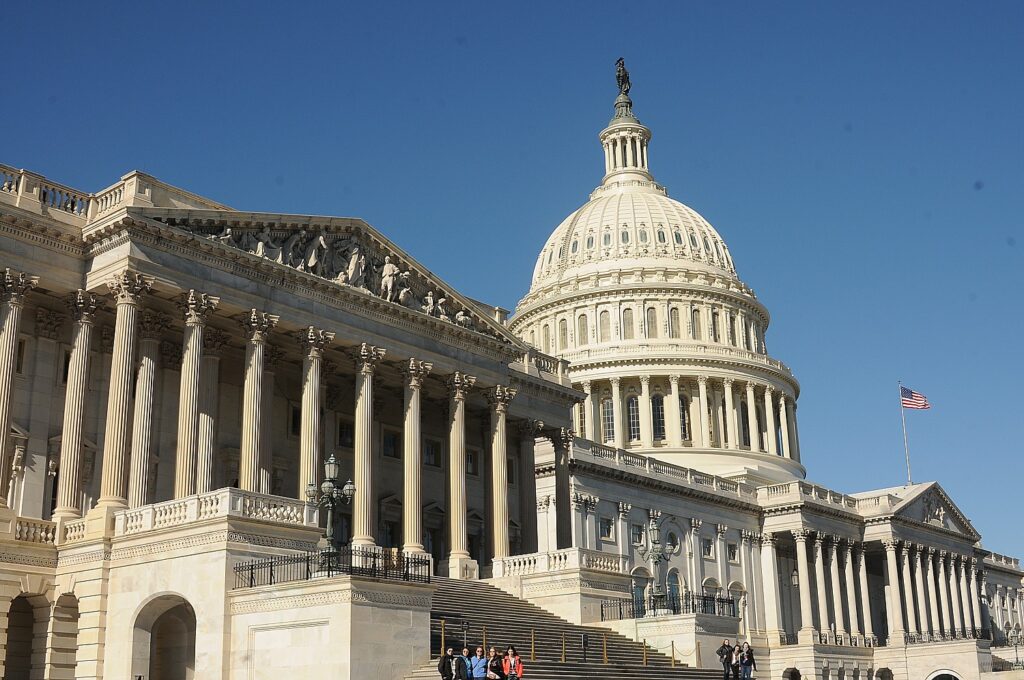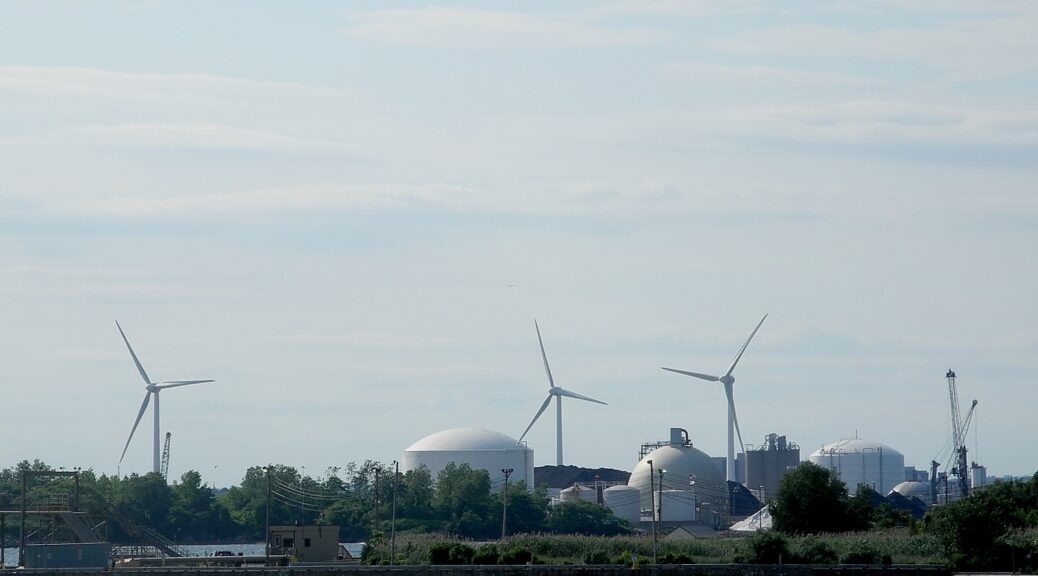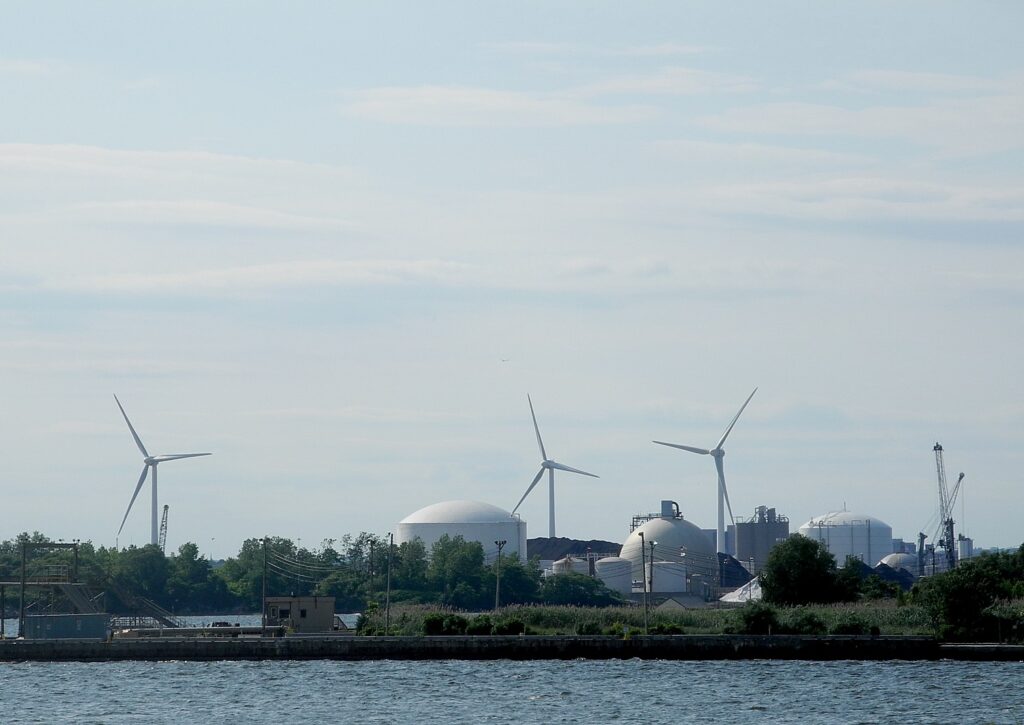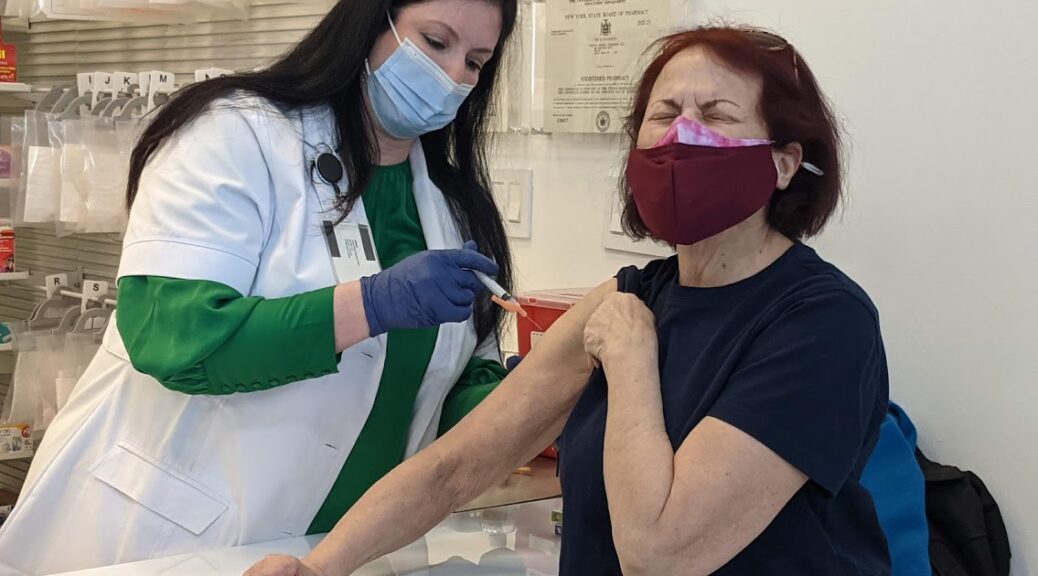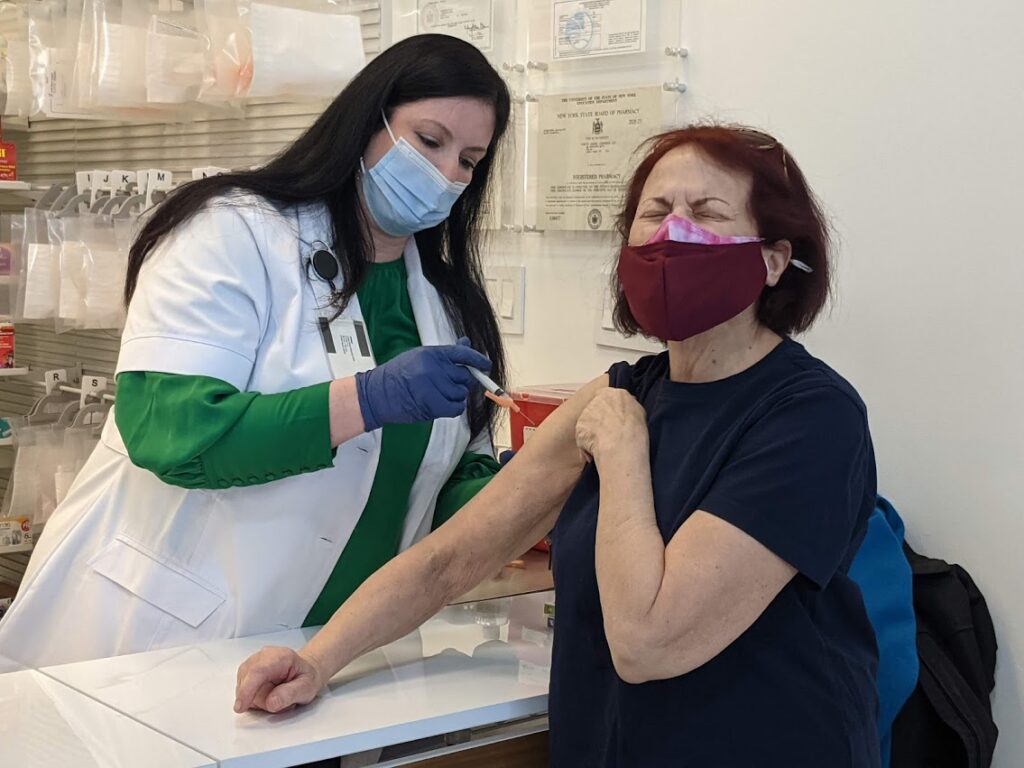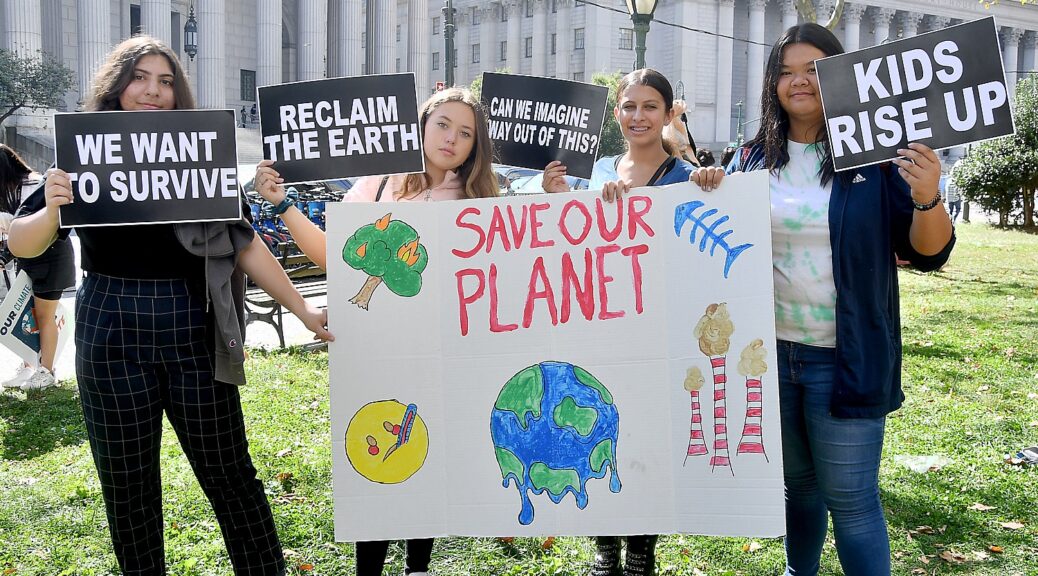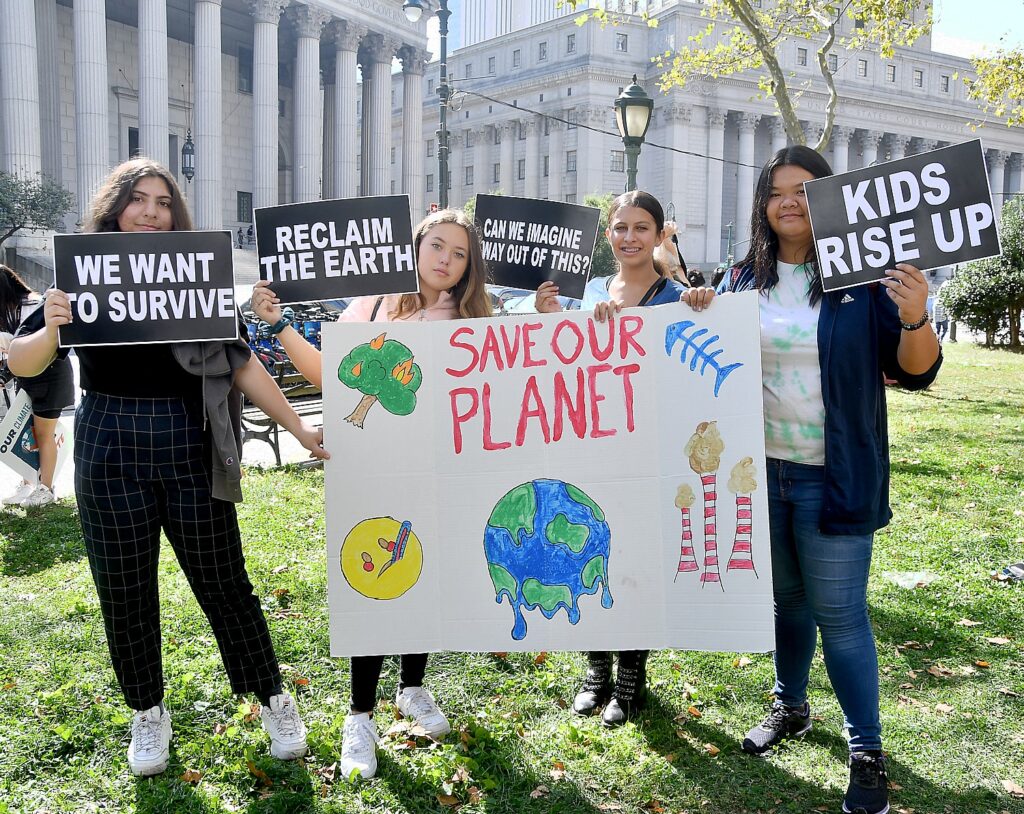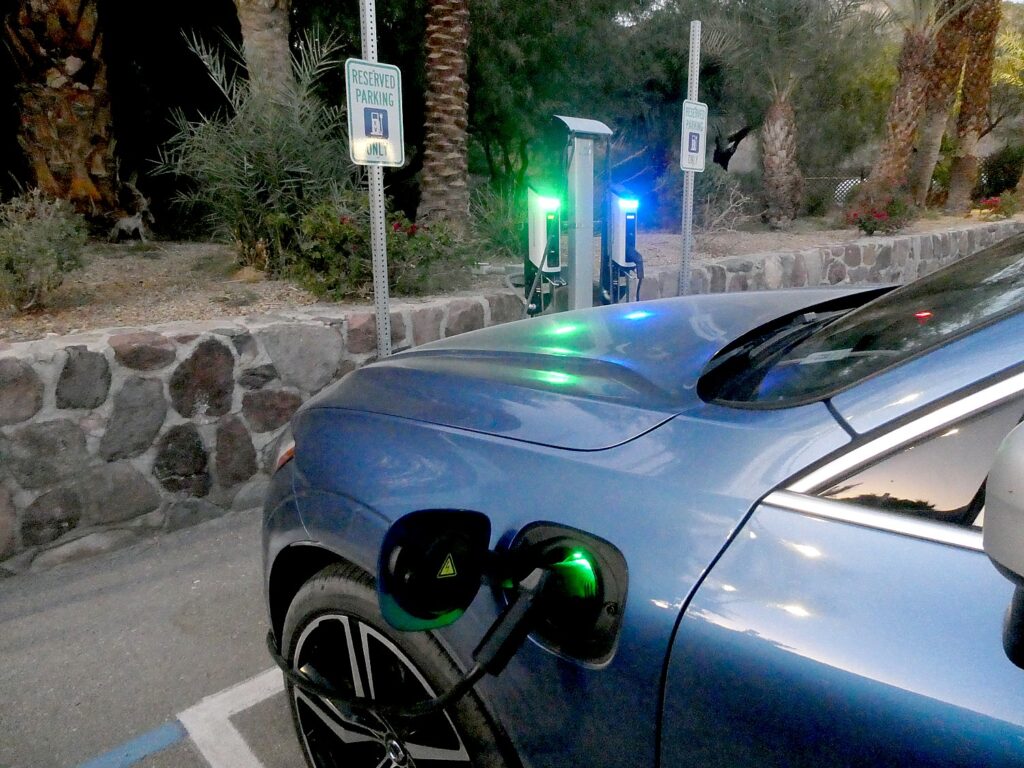
Vice President Kamala Harris announced an action plan to fast track Bipartisan Infrastructure Law investments, including this Electric Vehicle Charging Action Plan. Here is a fact sheet provided by the White House:
President Biden has united automakers and autoworkers to drive American leadership forward on clean cars, and he set an ambitious target of 50% of electric vehicle (EV) sale shares in the U.S. by 2030. Now, the Bipartisan Infrastructure Law will supercharge America’s efforts to lead the electric future, Building a Better America where we can strengthen domestic supply chains, outcompete the world, and make electric cars cheaper for working families.
President Biden, American families, automakers, and autoworkers agree: the future of transportation is electric. The electric car future is cleaner, more equitable, more affordable, and an economic opportunity to support good-paying, union jobs across American supply chains as automakers continue investing in manufacturing clean vehicles and the batteries that power them.
The Biden-Harris-Administration released an EV Charging Action Plan to outline steps federal agencies are taking to support developing and deploying chargers in American communities across the country. As a result of the Bipartisan Infrastructure Law, the Department of Energy (DOE) and Department of Transportation (DOT) will establish a Joint Office of Energy and Transportation focused on deploying EV infrastructure, working hand-in-hand to collect input and guidance from industry leaders, manufacturers, workers, and other stakeholders that will ensure the national network provides convenient charging for all. The initial focus will be building a convenient, reliable public charging network that can build public confidence, with a focus on filling gaps in rural, disadvantaged, and hard-to-reach locations.
The Bipartisan Infrastructure Law makes the most transformative investment in electric vehicle charging in U.S. history that will put us on the path to a convenient and equitable network of 500,000 chargers and make EVs accessible to all Americas for both local and long-distance trips. The Bipartisan Infrastructure Law includes $5 billion in formula funding for states with a goal to build a national charging network. 10% is set-aside each year for the Secretary to provide grants to States to help fill gaps in the network. The Law also provides $2.5 billion for communities and corridors through a competitive grant program that will support innovative approaches and ensure that charger deployment meets Administration priorities such as supporting rural charging, improving local air quality and increasing EV charging access in disadvantaged communities. Together, this is the largest-ever U.S. investment in EV charging and will be a transformative down payment on the transition to a zero-emission future.
With the historic investments in the Bipartisan Infrastructure Law, the Biden-Harris Administration is laying the foundation for a nationwide network of EV charging infrastructure to provide a reliable, affordable, convenient, seamless user experience that is equitable and accessible for all Americans. This network will enable:
- An accelerated adoption of electric vehicles for all private consumers and commercial fleets, including those who cannot reliably charge at their home that can improve our air quality, reduce emissions, put us on a path to net-zero emissions by no later than 2050, and position U.S. industries to lead global efforts.
- Targeted equity benefits for disadvantaged communities, reducing mobility and energy burdens while also creating jobs and supporting businesses.
- Create family-sustaining union jobs that can’t be outsourced.
Electric Vehicle Infrastructure
The Biden-Harris Administration announced the following actions:
- Establishing a Joint Office of Energy and Transportation: Tomorrow, Energy Secretary Jennifer Granholm and Transportation Secretary Pete Buttigieg will sign an agreement enabling them to leverage the best resources, talent, and experience at the DOT and the DOE, including the DOE’s National Labs. The Joint Office will ensure the agencies can work together to implement the EV charging network and other electrification provisions in the Bipartisan Infrastructure Law. This will provide states, communities, industry, labor, and consumer groups with a coordinated Federal approach and a “one-stop-shop” for resources on EV Charging and related topics. The agencies will complete a Memorandum of Understanding on December 14th to formally launch the Joint Office.
- Gathering Diverse Stakeholder Input: The White House is convening a series of initial stakeholder meetings on topics including partnerships with state and local government, domestic manufacturing, equity and environmental justice, civil rights, partnering with tribal communities, and maximizing environmental benefits. DOT and DOE will also launch a new Advisory Committee on Electric Vehicles and is targeting to appoint members to this committee by the end of the first quarter of 2022. DOT released an updated guide to deploying EV Charging in highway right-of-way in response to stakeholder interest. To gather input from the widest possible array of stakeholders, DOT has a new EV Charging Request for Information, where stakeholders can submit their priorities for Federal standards and guidance for consideration.
- Preparing to Issue Guidance and Standards for States and Cities: The Administration is already hard at work developing the guidance and standards described in the Bipartisan Infrastructure Law. No later than February 11th, DOT will publish guidance for States and cities to strategically deploy EV charging stations to build out a national network along our nation’s highway system. This guidance will look at where we already have EV charging and where we need—or will need—more of it. It will focus on the needs of disadvantaged and rural communities, catalyze further private investment in EV charging, and ensure we’re smartly connecting to our electric grid. No later than May 13th, DOT will publish standards for EV chargers in the national network to ensure they work, they’re safe, and they’re accessible to everyone.
- Requesting Information from Domestic Manufacturers: EV charger manufacturing, assembly, installation, and maintenance all have the potential to not only support our sustainability and climate goals, but also to drive domestic competitiveness and create good-paying, union jobs in the United States. To ensure this network of EV chargers can be built in America, by America, DOT and DOE are working directly with manufacturers, automakers and labor to understand what domestic sourcing is available today, and what may be possible in the future. In November, DOT and DOE released a request for information from domestic manufacturers to identify EV chargers and other charging related components that meet USDOT Buy America requirements and to highlight the benefits of shifting all manufacturing and assembly processes to the United States.
- New Solicitation for Alternative Fuel Corridors: Today, the DOT is announcing a forthcoming solicitation for the 6th round of Alternative Fuel Corridors designations. This program, created by the FAST Act in 2015, recognizes highway segments that have infrastructure plans to allow travel on alternative fuels, including electricity. FHWA will establish a recurring process to regularly update these corridors.
The current network of over 100,000 public chargers operates with different plug types, payment options, data availability, and hardware hookups. Today’s actions will establish a more uniform approach, provide greater convenience for customers, and offer increased confidence for industry. These federal programs will spur additional private sector investments and drive the build-out of a user-friendly, cost-effective, and financially sustainable national network creating well-paying jobs across manufacturing, installation, and operation. A ubiquitous charging infrastructure targeted to meet different consumers’ needs will provide equitable benefits to all Americans and provide flexibility for future investments, effective integration with a clean power system, and support a growing and diversifying fleet of electrified vehicles.
Electric Vehicle Batteries
Another key component of our electric vehicle strategy is to increase domestic manufacturing of EV batteries and components and advance environmentally responsible domestic sourcing and recycling of critical minerals.
In June, the Biden-Harris Administration released 100-day reviews of the supply chains of four critical products, including high-capacity batteries and critical minerals and materials. The reviews made dozens of recommendations across Federal agencies securing a reliable and sustainable end-to-end domestic supply chain for advanced batteries. These recommendations include supporting sustainable and responsible domestic mining and processing of key battery minerals, such as lithium, cobalt, and nickel, and ensuring new domestic automotive battery production adheres to high-road labor standards.
- The Federal Consortium for Advanced Batteries released the National Blueprint for Lithium Batteries, codifying the findings of the battery supply chain review in a 10-year, whole-of-government plan to urgently develop a domestic lithium battery supply chain that combats the climate crisis by creating good-paying clean energy jobs across America.
- The DOE Loan Programs Office (LPO) published new guidance and a fact sheet for the approximately $17 billion in loan authority in the Advanced Technology Vehicles Manufacturing Loan Program (ATVM) to support the domestic battery supply chain. LPO will leverage full statutory authority to finance key strategic areas of development and fill deficits in the domestic supply chain capacity. This will include the ATVM program making loans to manufacturers of advanced technology vehicle battery cells and packs for re-equipping, expanding or establishing such manufacturing facilities in the United States.
- DOE’s Federal Energy Management Program (FEMP) launched a new effort to support deployment of energy storage projects by federal agencies, including a federal government-wide energy storage review that will evaluate the current opportunity for deploying battery storage at federal sites and a call for projects from federal sites interested in deploying energy storage projects. These actions build on steps taken earlier this year to leverage $13 million in FEMP’s Assisting Federal Facilities with Energy Conservation Technologies grants to unlock an estimated $260 million or more in project investments, including battery storage projects.
There are already promising signs that the Administration strategy is working and industry is ready to step up. For example, Lithium is a critical input to batteries where the United States currently has very little domestic supply. The Biden Administration has funded two dozen teams to expand sourcing of lithium from geothermal brines and approved a permit for the Nevada-based Thacker Pass lithium mine. Automakers area also signing contracts that leverage domestic supply, including Ford sourcing lithium from recycled content through Redwood Materials, GM sourcing lithium from geothermal brines in the Salton Sea with Controlled Thermal Resources, and Tesla sourcing lithium from a Piedmont project in North Carolina.
The investments proposed by the Biden Administration will accelerate and amplify this progress. The Bipartisan Infrastructure Law includes more than $7 billion in funding to accelerate innovations and facilities across the battery supply chain from battery materials refining, processing and manufacturing to battery manufacturing, including components, to battery recycling and reuse. These investments will support the development of a North American battery supply chain, help expand manufacturing and recycling facilities in the United States and substantially advance the battery recycling through research, development and demonstration projects in collaboration with retailers as well as state and local governments.
The Bipartisan Infrastructure Law includes:
- $3 billion in competitive grants for battery minerals and refined materials aimed at accelerating the development of the North American battery supply chain.
- An additional $3 billion for competitive grants aimed at building, retooling, or expanding manufacturing of batteries and battery components (such as cathodes, anodes, and electrolytes), and to establish recycling facilities in the United States.
- Recognizing the need for innovative and practical approaches to battery and critical mineral recycling, the act includes research, development, and demonstration recycling projects ($60 million) and efforts in cooperation with retailers ($15 million) and state and local governments ($50 million) to increase the collection of spent batteries for reuse, recycling or proper disposal. The electric drive vehicle battery recycling and second-life applications program ($200 million) is focused on making electric vehicles batteries (e.g., optimized designs) easier to recycle and utilize in secondary applications before recycling.
An additional $750 million “Advanced Energy Manufacturing and Recycling Grant Program” to re-equip, expand or establish an industrial or manufacturing facility to reduce GHG emissions of that facility substantially below current best practices.

